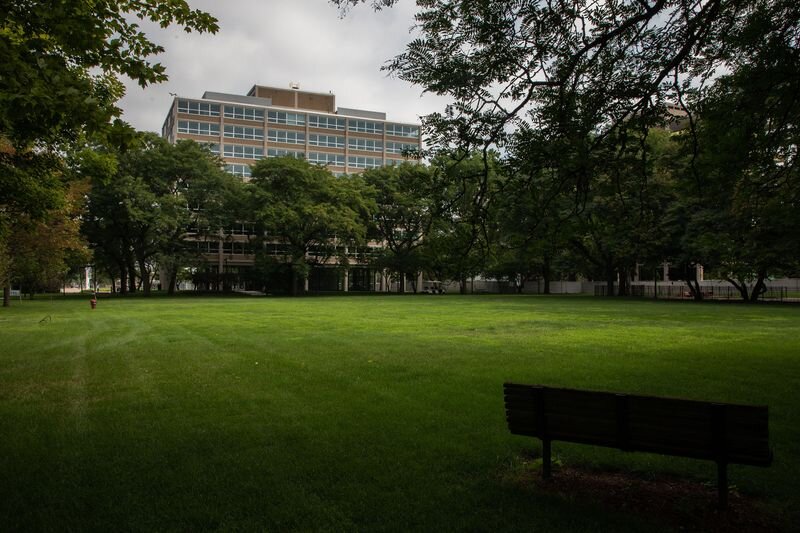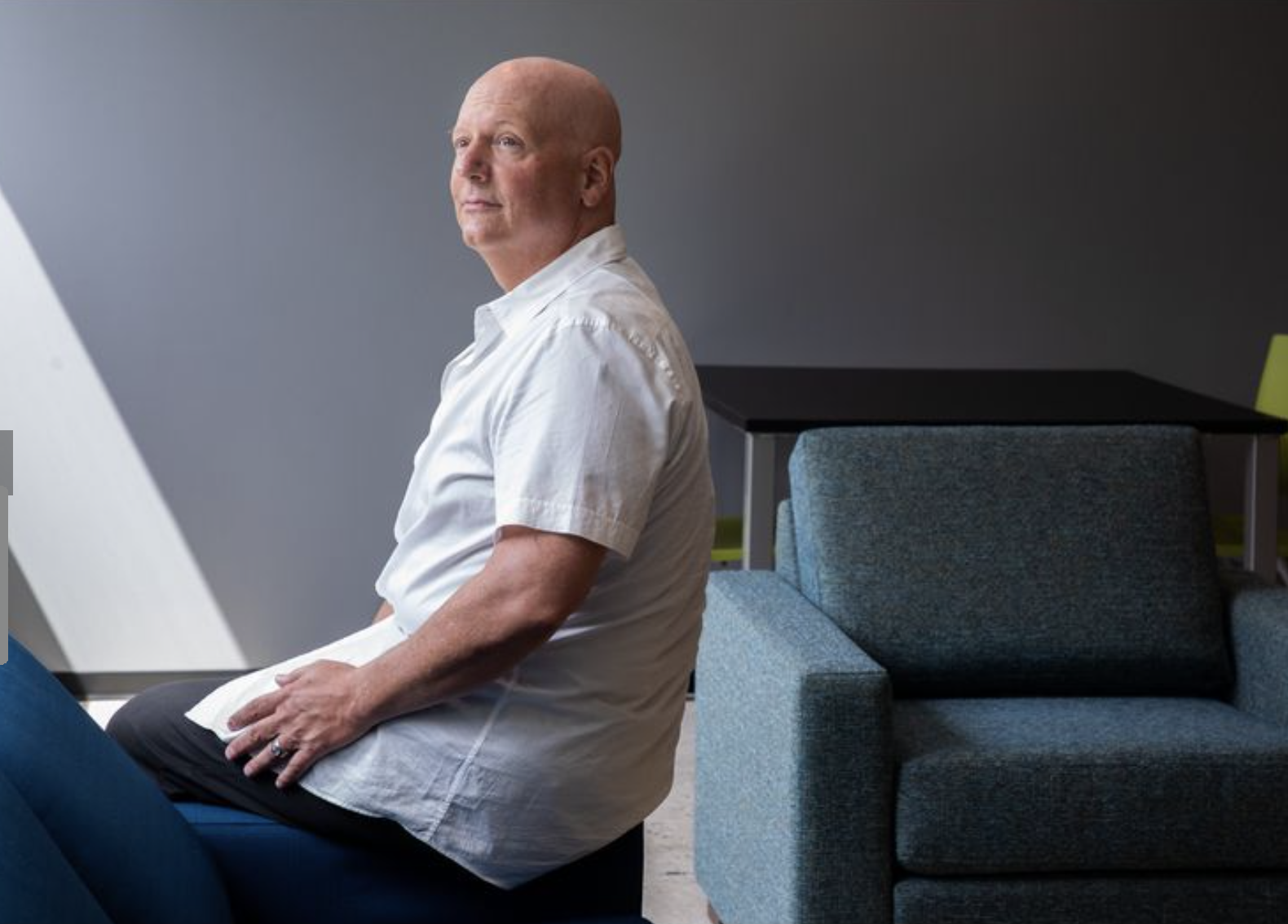Chicago Tribune, August 2020
Column: Mies van der Rohe’s workhorse tower gets a vibrant remake as a dorm at Chicago’s Illinois Institute of Technology
By BLAIR KAMIN
CHICAGO TRIBUNE |
AUG 11, 2020 AT 1:50 PM
The pandemic. The unrest that followed the killing of George Floyd. Rampant looting in downtown Chicago. Against that chaotic backdrop, it was moving Monday to experience the profound calm that characterizes the architecture of master modernist Ludwig Mies van der Rohe.
On the first floor of a newly renovated building at the Illinois Institute of Technology, the South Side campus that bears Mies’ unmistakable imprint, floor-to-ceiling glass framed a serene view of honey locust and hawthorn trees. The looting that had ransacked downtown stores earlier that morning seemed far away.
The building I was touring was not S.R. Crown Hall, the clear-span, steel-and-glass masterwork that’s home to IIT’s architecture school. It was, instead, George J. Kacek Hall, a workhorse nine-story building that Mies designed in the mid-1950s as faculty, staff and married student housing and that Chicago architect Dirk Denison has creatively converted into an undergraduate dorm.
Kacek Hall’s concrete and brick exterior is squat, lacking the perfect proportions and elegant refinements of Mies’ iconic, steel-and-glass high-rises at 860 and 880 North Lake Shore Drive. But it speaks with an honest, sometimes stirring, voice.
Concrete columns step back as they rise, reflecting the lighter load they carry. As at 860-880, a masonry plinth lifts the building above quotidian clutter. Instead of being interrupted by massive walls, space flows through the building’s base, courtesy of stiltlike columns and a recessed lobby sheathed in glass. Corner columns feature a signature Mies detail, the re-entrant corner.
After Denison’s $22.5 million remake, this solid work of mid-20th century modernism has emerged with a respectfully refreshed exterior and an interior that messes ever so slightly with Mies to respond to how students live today. Even the sometimes-overzealous defenders of Mies’ legacy, the so-called Mies police, are unlikely to object to the result.
Among other things, the project reveals how architects who do high-end work — Denison’s portfolio is filled with custom-designed, single-family homes for the superrich — can apply wisdom from such jobs to those with considerably lower budgets.
Originally called Bailey Hall and now renamed for an IIT-trained engineer who bequeathed a major gift to the university upon his death in 2018, Kacek Hall rises at 3101 S. Wabash Ave., just east of the Green Line elevated tracks. Students were moving in Monday, two weeks before classes start.
COVID-19 still cast a shadow. To minimize crowding and the risk of spreading the coronavirus, the 328-bed dorm at first will house about 170 students. The elevators are supposed to be used by only one person at a time. Some furniture has been removed from the building’s expansive student lounges to promote social distancing.
Nonetheless, the exterior has a new sheen after a gut rehab directed by Denison and his project architect, Justin DeGroff, , both graduates of IIT’s architecture school. (Denison teaches at IIT.) The architects had contractors strip the building down to its concrete skeleton and elevator cores, then went about bringing it into the 21st century.
New beige paint protects the columns from the ravages of Chicago’s freeze-and-thaw cycles. Aluminum frames for the building’s horizontal “ribbon” windows maintain the profile of the originals but add fresh sparkle. The windows themselves are double-paned, which will join with new insulation behind the building’s brick panels to cut energy costs by at least 60%, Denison predicts.
On the glass walls of the recessed lobby, the donor’s name is emblazoned in the san serif Futura typeface that was de rigueur, like white shirts and black ties, at IIT in the middle years of the 20th century. Yet it all feels fresh, not nostalgic, as does the interior.
There, Denison has departed from Mies’ notion of the flexible “universal space” in favor of something tailored to the building’s first- and second-year students. Recognizing that they may be eager to establish social bonds, the architect provides ample opportunities for chance meetings and group activity.
The welcoming, transparent lobby is outfitted with four geometric, but surprisingly comfortable, chairs designed by architect Daniel Libeskind, with whom Denison studied at Harvard. A new steel staircase, which nods to Mies’ revered steel staircase at the Arts Club of Chicago, leads from the lobby to a basement lounge outfitted with bright blue and green furniture inspired by the building’s natural surroundings.
Upstairs, on the dormitory floors, Denison forgoes rigid, four-square geometry for an arrangement that has student rooms (singles, doubles and triples) pinwheel around a social lounge and shared bathroom area on each side of the floor. The doubles, in particular, are quite small, but that is intentional, the idea being to get students out of their rooms and into the brightly colored lounges. Their ribbon windows offer striking views, both of the nearby Guaranteed Rate Field and the distant downtown skyline.
In one of many thoughtful touches drawn from Denison’s single-family homes, the floor plan emphasizes a sense of discovery. You “find the view,” Denison says. It’s not just there when you open the door. Playful wall graphics by David Salkin further enliven the student floors. One pattern suggests the letter “D,” perhaps a tribute to the architect.
How will students react to the dorm? Will IIT’s anti-COVID measures work? Those questions are still to be answered. In the meantime, IIT and Denison deserve credit for the university’s latest burnishing of Mies’ legacy. Kacek Hall isn’t Crown Hall, which IIT restored in 2005, but not every building has to be a masterpiece to merit preservation.
The workhorses, this fine renovation reminds us, are worth saving too.
Blair Kamin is a Tribune critic.
Twitter @BlairKamin
Check out the full article here.



